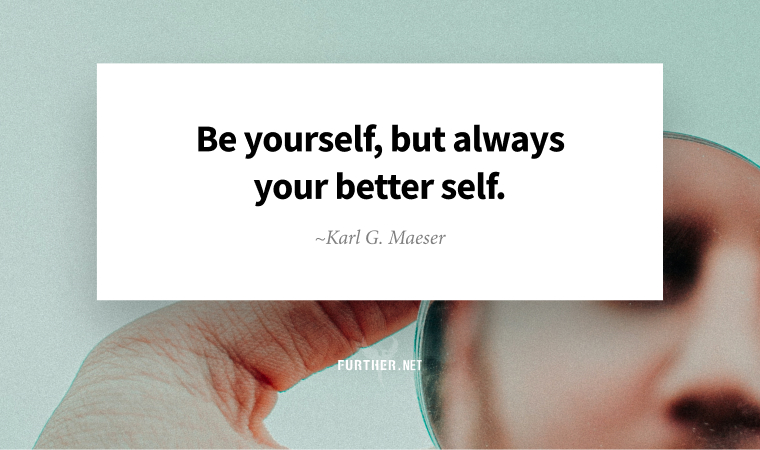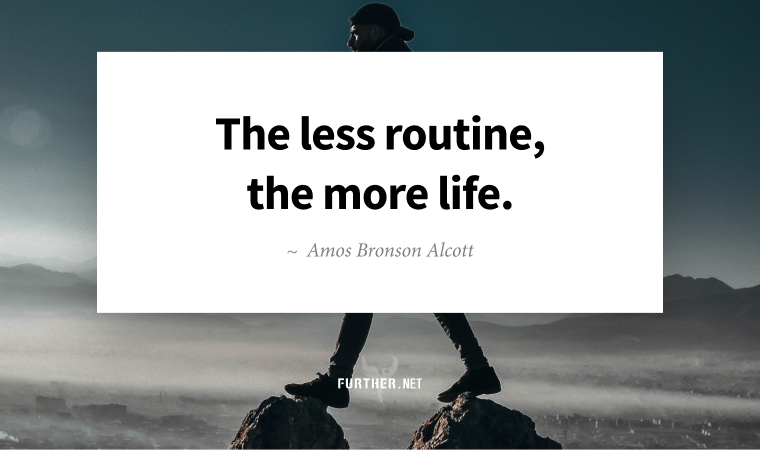
Welcome to this week’s Further, the top hand-picked health, wealth, and personal growth resources for people in their 40s and 50s. Sign up here if you’re not already on board.
After taking last week off for Thanksgiving, the relevant resources have stacked up a bit. So without further delay (see what I did there?), let’s dive right into nine items that will help kick off the final month of 2020 in the best possible way.
Ready? Onward ….
Move Those Molecules
When we exercise, even for a few minutes, hundreds of molecules related to our metabolic health rise and fall in our bloodstreams. Changes in genomics, proteomics, and microbiomics (three of many “omics”) are likely to be the preliminary step in a complex cascade of biological actions that contribute to better health.
The “Omics” of Exercise | New York Times
Weight Loss Despite Years Gained
If the thought of firing up your omics isn’t doing it for you, how about weight loss even as you age? People over the age of 60 can lose an equivalent amount of weight as younger people using only lifestyle changes, according to a new study. So, for you, no problem at all.
Age is No Barrier to Successful Weight Loss | Science Daily
The Vaccine Experience
The news is highly promising with both the Pfizer and Moderna vaccines for COVID-19, but of course we want to know more. Here’s a recounting of what it was like for a few of the 44,000 people who took part in the Pfizer / BioNTech Phase 3 vaccine trial.
My Experience in a COVID-19 Vaccine Trial | Next Avenue
Capping the Aging Process
Every time a cell inside your body replicates, a slither of your youth crumbles to dust. Scientists in Israel say they’ve been able to reverse this process by extending the length of telomeres (the caps on chromosomes) in a promising small study.
In a First, Scientists Say They’ve Partially Reversed a Cellular Aging Process in Humans | Science Alert
Viral Attention
As the stress of living under the COVID-19 pandemic worsens, it’s not abnormal to find yourself less productive than usual — whether it’s having a hard time staying on task, or difficulty filtering your emotions. Here are seven important things to bear in mind.
7 Things You Should Know About Your Attention During COVID-19 | Brain World
Happy Country, Happy Life
A long-standing debate in the field of psychology has been whether moving to a new location makes people happier. The verdict is that moving to a happier country could make you happier, while moving to a less happy country could reduce your level of happiness.
Would Moving to a New City or Country Make You Happier? | Psychology Today
Digital Disconnect
There has to be more to life than doomscrolling Twitter and binging Netflix. With the holiday season upon us, now is a good time to take a breather and consider a digital detox. Just make sure to check your email on Wednesdays. 🙂
It’s Time for a Digital Detox. (You Know You Need It.) | New York Times
Money on Your Mind
You start a new budget with the best of intentions, only to fail to follow through. Maybe you’ll try again next month, right? The cycle goes on and on, and you’re left disappointed. How about you ditch the budget and get started with conscious spending instead.
Conscious Spending: How to Budget by Looking Into the Future | IWTYTBR
Scroll down for number nine and get the scoop on how the 168-hour cycle can improve your productivity and life in general. And in the Flashback, you’ll discover the remarkable contribution Prince made to a social distancing anthem from 1983.
Keep going-
P.S. Share this issue of Further with friends, and earn cool Further gear. It’s easy … just use these links that contain your unique referral code:
Twitter | Facebook | LinkedIn | WhatsApp | Email
Transcend Your Daily Routine with a 168-Hour Cycle

By Trudi Roth
One of the most interesting things about living through a pandemic is recognizing how routine-driven we are. And the biggest routine of all is the 40-hour, five-day workweek.
For some, this is due to office jobs. Others of us unemployable types keep a similar schedule to sync with clients and colleagues. I’ll confess my old corporate training gave me an “everybody’s working for the weekend” mentality.
That falls apart once you realize relegating fun and freedom to the weekend was propagated by old-school overlords. Henry Ford started the trend in the early 1900s so his employees — his best customers — would have time to enjoy their automobiles.
In 1938 Congress passed the Fair Labor Standards Act, which as amended codified the 40-hour workweek, leading to an 8-hour workday. Employers supported the idea because weekends increased efficiency and reduced absenteeism.
Cut to our post-digital world, where for most of us, work is available 24/7. For some, 9-5 is a great way to make a living. But if it doesn’t leave space for the new experiences that support career-building factors like creativity and innovation, routines can backfire.
168 Hours to Freedom
As Lisa Firestone says in Psychology Today, “Seeking out and actively choosing novelty helps us feel more alive, engaged, and attuned to ourselves and others.”
Enter the 168-hour cycle (that’s the number of hours in an entire week). The concept has been promoted by author and productivity expert Laura Vanderkam to help us time-starved, frenzied people reframe time management.
Daily rituals are great, but they are not the only way to make things happen. By being creative and looking at all 168 hours in a week, we can often find space for more things than we think. The 24-hour trap limits possibilities. Looking at 168 hours opens things up.
Shifting your perspective invites productivity boosters like novelty and spontaneity and diminishes limiting factors like unrealistic ideals of success and perfection.
The trick is to stop thinking of time in increments of a 24-hour day. Instead, embrace the 168-hour cycle.
Escape the 24-Hour Trap
To get into a groove, Vanderkam suggests keeping a journal of all you do in a week. Then look for the aha moments, where time spent is wasted, for example, scrolling through social feeds vs. nourishing your brain and body with a hike or yoga.
Writer Ash Jurberg, who broke free of his routines using Vanderkam’s approach, takes it a step further by recommending you write down work, fitness, and personal goals for each cycle. For example, his typical cycle includes writing five articles, taking ten dog walks and doing four rowing sessions, with regular post-workout breathwork.
How you organize your time is up to you. Just be sure to evaluate after each cycle. Did you achieve your objectives? Have fun? Enjoy more creativity, productivity, and well-being?
Regardless of the outcome, the 168-cycle is an excellent reminder that whatever you do, time is on your side. If you’re the one in control of it, that is.
The 24-Hour Trap: Rethinking Daily Habits | Fast Company
I Quit Daily Routines and Moved to a 168 Hour Cycle and My Productivity Increased | Medium
further: flashback

Stevie Nicks – Stand Back
The Wild Heart, 1983
Those infectious synthesizer grooves that run throughout Stand Back? Prince showed up in the studio for 25 minutes, laid them down, and left. Stevie Nicks said, “Nobody can exactly recreate –- not even with two piano players –- what Prince did.” | YouTube
further: sharing
Would you mind sharing this issue of Further? If so, you can earn cool Further gear when people subscribe thanks to your generosity.

It’s easy … just use these links that contain your referral code:
Twitter | Facebook | LinkedIn | WhatsApp | Email
You can also recommend the newsletter however you like by copying and pasting your unique referral link:
{{subscriber.rh_reflink}}
Thank you for sharing Further!
